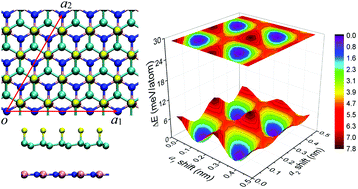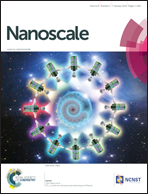Reduction of interfacial friction in commensurate graphene/h-BN heterostructures by surface functionalization
Abstract
The reduction of interfacial friction in commensurately stacked two-dimensional layered materials is important for their application in nanoelectromechanical systems. Our first-principles calculations on the sliding energy corrugation and friction at the interfaces of commensurate fluorinated-graphene/h-BN and oxidized-graphene/h-BN heterostructures show that the sliding energy barriers and shear strengths for these heterostructures are approximately decreased to 50% of those of commensurate graphene/h-BN. The adsorbed F and O atoms significantly suppress the interlayer electrostatic and van der Waals energy corrugations by modifying the geometry and charge redistribution of the graphene layers. Our empirical registry index models further reveal the difference between the roles of the F and O atoms in affecting the sliding energy landscapes, and are also utilized to predict the interlayer superlubricity in a large-scale oxidized-graphene/h-BN system. Surface functionalization is a valid way to control and reduce the interlayer friction in commensurate graphene/h-BN heterostructures.


 Please wait while we load your content...
Please wait while we load your content...